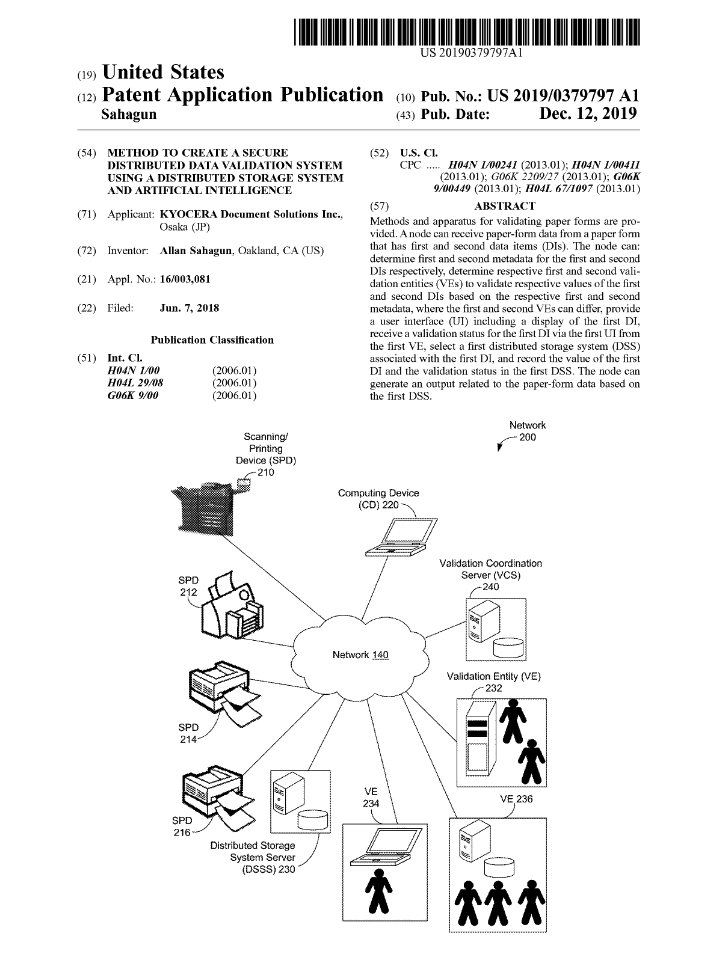
I thrive as a human-centered creator: finding my joy in applying technology to tackle and overcome human challenges.
Using the framework of invention as a bridge between technology and humans, several of my inventions have earned recognition and received patents from the US Patent and Trademark Office (USPTO).
Machine learning optimization of machine user interfaces
Granted: October 31, 2023
Sole Inventor
US11803701B2:
While working on optimizing the design of products, I was referencing heatmaps and analytics tracking product usage. I realized that a lot of the testing we were manually doing could be automated using machine learning (ML).
This invention uses ML to test and ultimately optimize interface layouts based on specific performance goals tied to usability at scale using the HEART framework (Happiness, Engagement, Adoption, Retention, Task Success)
Image-to-text recognition for a sequence of images
Granted: August 23, 2022
Sole Inventor
US20200394266A1:
While traveling in a foreign country, I realized that my real-time translation apps worked with varying success depending on how well the camera “read” portions of text.
This invention uses artificial intelligence to compare multiple sequential images and then stitch together the most logical understanding based on multiple combinations of metadata.
Method to create a secure distributed data validation system using a distributed storage system and artificial intelligence
Granted: June 8, 2021
Sole Inventor
Patent US20200120221A1:
While working with a medical digitization company, a key constraint was security — the way that they handled this was by creating highly supervised warehouses for files to be digitized on-site. This presents a huge challenge in scaling: you are continuously dealing with physical location as a limitation when attaining new customers.
This invention uses a distributed validation system, blockchain hashing, and artificial intelligence to parse and reconstruct digitized documents to remove the limitation of colocation and allow for a secure distributed validation system to take its place.
Deploying multiple nodes for creation of blockchains for trackable actions
Filed: February 28, 2018
Granted: October 6, 2020
Lead Inventor
Patent US10797883B2:
With the convergence of IoT and blockchain/distributed ledgers, the possibility of tracking when and where resources are emerged.
This invention utilizes that presence of networked devices to communicate and track how things enter or leave locations and eliminates the need for manual documentation of times, hours, and locations.
Image handling to select a subject of an image to display and conceal a remainder of the image
Granted: May 5, 2020
Lead Inventor
Patent US10643361:
We view images on a myriad of devices with varying resolutions. Sometimes, the content is not reflected in an image because the focal point has been lost or deemphasized as a result of responsive resizing.
This invention allows content creators to prioritize and dynamically direct the focus of a resized image, allowing their consumers to focus on what the content creator intended.
Suggestion Of Alternate User Input Using Different User Interface
Granted: September 17, 2019
Sole Inventor
US20190057080A1:
A common reason we input the wrong information on a digital screen is because we either cannot see the keyboard as a result of light reflection or we are using the wrong keyboard (I cannot count the number of times I look down at a text message only to realize I accidentally typed a series of numbers and symbols, not words).
This invention uses the location of taps and cross references said location across the characters on a device’s enabled keyboards to stitch together suggestions of what was meant to be inputted. Think of it as a failsafe for autocorrect by using multiple sources.
Method and device for revising OCR data by indexing and displaying potential error locations
Granted: September 12, 2017
Lead Inventor
US9760786B2:
This was my first patent at Kyocera. One of the issues that would continuously arise when digitizing documents was that high volume optical character recognition scans did not alert the end user of possible scanning errors, nor did it give the end user the ability to actually make corrections.
This invention provided a stop gap solution where an end user would be alerted whenever there was a possible scanning error, provide locations on where the low-confidence transcriptions occurred, and the opportunity to manually input the correct information.
Method and apparatus for managing and capturing communications in a recruiting environment
Filed: October 28, 2010
Abandoned
US20120109837A1:
This was the first patent I ever filed, when I was 23 years old. This was before virtual recruiting was a mainstream occurrence. While the patent has since been abandoned, it is a great memento of an invention that was several years ahead of its time.








